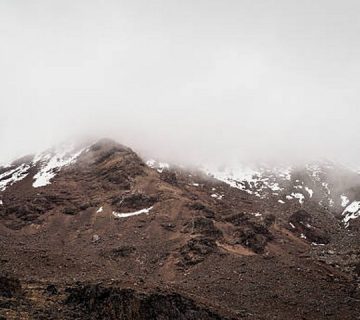Common Health Problems On Kilimanjaro Treks And How To Avoid Them
Embarking on a journey up Mount Kilimanjaro is not just a trek; it’s a voyage into the heart of Africa’s majestic landscapes and a test of one’s physical and mental fortitude. As the highest peak in Africa, Kilimanjaro challenges thousands of climbers each year, offering them the chance to stand atop one of the world’s greatest natural wonders. However, as with any great adventure, there are risks involved, especially concerning one’s health. At Kilimanjaro Centre for Trekking and Ecotourism (KCTE), we believe that preparation is the key to a successful and enjoyable climb. Therefore, we’ve compiled crucial insights into the common health problems on Kilimanjaro treks and how you can avoid them.
Understanding the Mountain’s Challenges
Before diving into specific health issues, it’s important to understand that Kilimanjaro is not just a physical challenge, but an environmental one. The mountain’s ecosystem spans from tropical to arctic, which means climbers face a wide range of temperatures and weather conditions. This unique environment, coupled with high altitude, can lead to specific health complications if not properly managed.
Altitude Sickness: The Primary Concern
Recognizing the Symptoms
Altitude sickness is perhaps the most significant health risk on Kilimanjaro. As you ascend, the air becomes thinner, and oxygen levels decrease, which can lead to Acute Mountain Sickness (AMS). Symptoms of AMS include headache, nausea, dizziness, and fatigue. If ignored, AMS can progress to more severe conditions such as High Altitude Pulmonary Edema (HAPE) or High Altitude Cerebral Edema (HACE), both of which can be life-threatening.
Prevention and Management
Prevention is better than cure, particularly on Kilimanjaro. To minimize the risk of altitude sickness:
- Climb Slowly: At KCTE, we encourage our climbers to adopt a ‘pole pole’ (slowly, slowly in Swahili) approach. This slow pace helps your body acclimatize to the altitude gradually.
- Stay Hydrated: Drink at least 3-4 liters of water per day. Dehydration exacerbates symptoms of altitude sickness.
- Eat Well: High-carbohydrate meals can help keep your energy up and combat the effects of altitude.
- Consider Medication: Medications like Acetazolamide can be used for prevention and treatment of AMS, but consult with a doctor before your trip.
Hypothermia: The Cold’s Bite
Knowing the Signs
Another common issue trekkers face is hypothermia, which occurs when your body loses heat faster than it can produce it, causing a dangerously low body temperature. Symptoms include shivering, slurred speech, slow breathing, and fatigue.
Staying Warm
To protect yourself from hypothermia:
- Layer Up: Wear multiple layers of clothing that you can add or remove as needed. Focus on water-resistant and windproof outer layers.
- Stay Dry: Keep dry with waterproof gear and change out of wet clothes immediately.
- Fuel Up: Eating warm, calorie-rich foods can help maintain your body temperature.
Dehydration: A Silent Threat
Catching the Early Signs
Dehydration is a stealthy risk due to the dry mountain air and exertion. Symptoms can include thirst, reduced urine output, and dark yellow urine.
Effective Hydration Strategies
- Constant Sipping: Don’t just drink when you’re thirsty. Keep a hydration bladder handy, and sip small amounts regularly.
- Monitor Urine Color: Aim for a light straw-colored urine as a sign of proper hydration.
Sunburn: The Equatorial Sun
Shielding Your Skin
At high altitudes, the UV rays are stronger, especially in the equatorial regions. Sunburn can happen quickly and unexpectedly on Kilimanjaro.
Protective Measures
- Sunscreen: Apply a high-SPF sunscreen regularly.
- Cover Up: Wear a wide-brimmed hat, UV-protectant sunglasses, and long sleeves.
Reaching New Heights Safely
Climbing Kilimanjaro should be an inspiring and transformative experience, not marred by preventable health issues. At Kilimanjaro Centre for Trekking and Ecotourism (KCTE), we are dedicated to ensuring that our clients are well-prepared and informed. Our expert-guided treks are designed to maximize your safety and enjoyment.
Remember, the mountain has stood for millions of years, and it invites you with the same timeless challenge. With the right preparation, you can meet this challenge head-on and emerge victorious at the summit.
FAQs About Health on Kilimanjaro
What is the best way to prevent altitude sickness on Kilimanjaro?
The best prevention is gradual acclimatization. Climb slowly, stay hydrated, eat properly, and consider preventive medications under guidance from a healthcare provider.
How cold does it get on Kilimanjaro?
Temperatures can drop below freezing, especially at higher camps and during the night. Be prepared with appropriate gear to handle sub-zero conditions.
Can I climb Kilimanjaro if I’m not an experienced hiker?
Yes, Kilimanjaro is accessible to relatively fit individuals, even without prior mountain trekking experience. However, preparation and physical conditioning are essential.
How long does it take to climb Kilimanjaro?
Most routes take about 5 to 9 days, depending on the route and speed of ascent.
What should I eat and drink during the trek?
High-energy, carbohydrate-rich foods are best. Avoid alcohol and consume plenty of water and electrolytes.
Join Us at KCTE for Your Kilimanjaro Adventure
Are you ready to take on the challenge of Kilimanjaro? Join us at Kilimanjaro Centre for Trekking and Ecotourism (KCTE) for an unforgettable journey. Our expert team will guide you, step-by-step, ensuring a safe, memorable, and inspiring climb. Visit our website to book your climb today and embrace the adventure that awaits you on the Roof of Africa!




